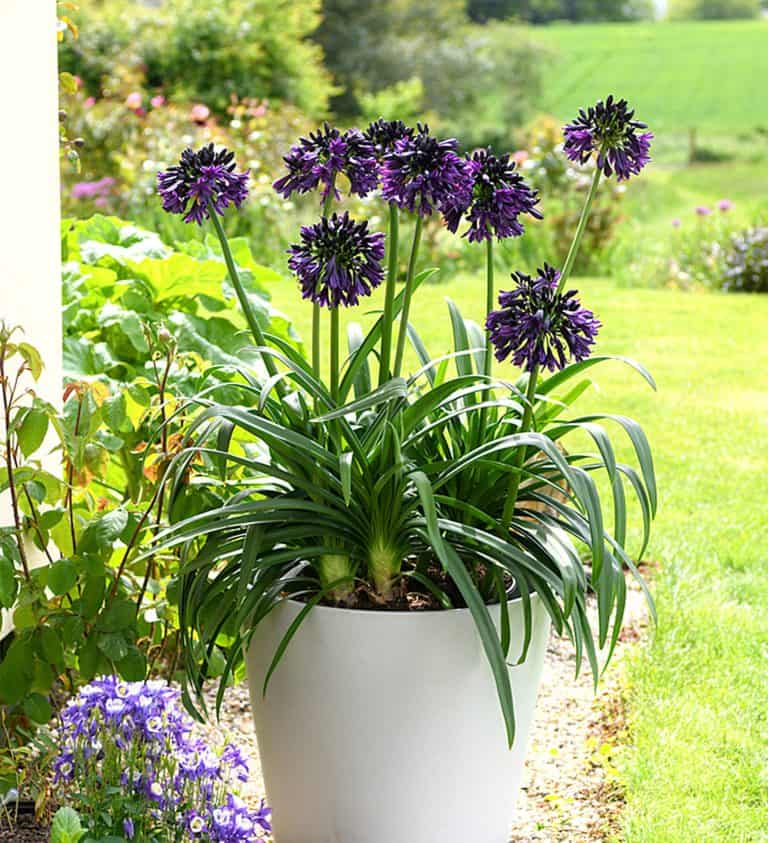Opening the Mysteries of Agapanthus: An In-depth Expedition of Selections, Growing Strategies, and Upkeep Practices

Agapanthus, often shrouded in enigma because of its diverse array of selections and intricate upkeep demands, occurs as an enigmatic subject for several garden fanatics. With a wide variety of cultivars available, each flaunting special qualities and growth routines, understanding the intricacies of these plants can be both tough and fulfilling. As we discover the nuances of growing techniques and dig into the essential upkeep techniques required to support these spectacular blossoms, a globe of possibilities unravels for those seeking to understand the art of cultivating agapanthus.
Agapanthus Varieties Demystified
Agapanthus ranges show a varied range of qualities, making it crucial for gardeners to comprehend the differences in between them for effective cultivation. The Agapanthus praecox, or Blue Lily of the Nile, is one more preferred alternative, flaunting big round collections of white or blue flowers atop tall stalks.
For those looking for a much more portable alternative, the Agapanthus 'Peter Frying Pan' is an appropriate selection, with its smaller sized stature and fragile blue blooms. On the other hand, the Agapanthus 'Tornado Cloud' variety offers a dramatic flair with its deep purple blossoms and dark vegetation (Agapanthus). In addition, the Agapanthus 'Albus' attracts attention for its pure white blooms, producing a sensational comparison in any kind of yard setting
Understanding these differences can help gardeners pick the most suitable Agapanthus range for their details requirements and preferences, ensuring a dynamic and flourishing garden screen.
Planting Agapanthus Like a Pro
When growing Agapanthus for ideal growth and aesthetic impact, thorough interest to dirt high quality and sunlight direct exposure is critical. Agapanthus thrives in well-draining dirt with a slightly acidic to neutral pH degree. Before planting, modify heavy or compressed dirt with organic issue such as compost to enhance drainage and fertility. Select a growing place that obtains full sunshine to partial color, as Agapanthus normally prefers at the very least 6 hours of sunlight daily for durable flowering. When planting, make certain the crown of the plant rests at soil level to protect against rot and motivate healthy and balanced growth.

Vital Upkeep Tips for Agapanthus
To make sure the ongoing wellness and vitality of your Agapanthus plants, what trick upkeep methods should be focused on throughout the growing season? Agapanthus plants like equally wet soil but can endure short periods of dry spell when established. Agapanthus plants benefit from division every few years to stop congestion, boost blooming, and rejuvenate the plant.
Troubleshooting Common Agapanthus Issues
Recognizing and quickly attending to usual concerns that may affect the wellness of your Agapanthus plants is important for preserving their vigor and beauty. Ensure your Agapanthus obtain sufficient sunshine, ideally around 6-8 hours per day. By being cautious and attending to these common problems promptly, you can aid your Agapanthus thrive and thrive in your yard.
Making Best Use Of Agapanthus Blooms: Expert Techniques
Enhancing the vibrancy and abundance of Agapanthus flowers needs a calculated strategy that uses ideal expanding problems and professional strategies. To maximize Agapanthus blossoms, start with choosing the ideal variety for your region and preferred visual. Agapanthus selections vary in height, blossom shade, and blossom time, so pick one that fits your garden's requirements.
Appropriate planting is important for durable blooming. Plant Agapanthus in well-draining dirt with enough sunshine exposure. Guarantee the soil is rich in nutrients and raw material to sustain healthy growth and respected blooming. Routine watering, particularly throughout the energetic expanding period, is vital web link to prevent stress and urge flowering.
Fertilize Agapanthus with a balanced plant food to promote blooming. Deadheading invested flowers can redirect the plant's power into generating brand-new flowers (Agapanthus). Separate chock-full globs every few years to rejuvenate the plant and boost flowering
Lastly, protect Agapanthus from parasites and illness that can prevent flowering. Implementing these specialist approaches will certainly assist you achieve a spectacular display of Agapanthus blooms in your yard.
Verdict
In conclusion, the secrets of agapanthus have actually been revealed via a detailed expedition of varieties, planting techniques, and maintenance practices. By repairing visit site common problems and implementing skilled methods, one can make best use of agapanthus blossoms and develop a stunning yard display screen.

When growing Agapanthus for ideal growth and visual impact, thorough focus to dirt high quality and sunlight direct exposure is critical.To grow Agapanthus like a pro, room the plants according to their mature dimension to permit for proper air blood circulation and prevent overcrowding. Agapanthus plants profit from department every few years to stop congestion, enhance blooming, and renew the plant.In verdict, the Get More Info secrets of agapanthus have actually been introduced through a comprehensive expedition of selections, planting methods, and maintenance techniques.